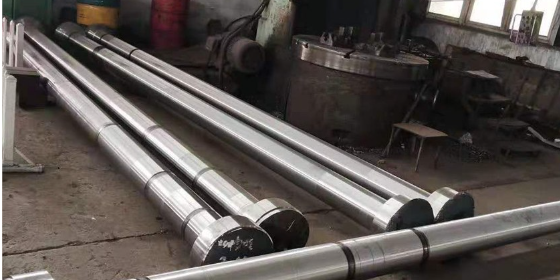Due to the presence of temper brittleness during forging and processing of forgings, the available tempering temperatures are limited. To prevent brittleness from increasing during tempering, it is necessary to avoid these two temperature ranges, which makes it difficult to adjust mechanical properties. The first type of temper brittleness. The first type of temper brittleness that occurs during tempering between 200 and 350 ℃ is also known as low-temperature temper brittleness. If the first type of temper brittleness occurs and is then heated to a higher temperature for tempering, the brittleness can be eliminated and the impact toughness can be increased again. At this point, if tempered within the temperature range of 200-350 ℃, this brittleness will no longer occur. From this, it can be seen that the first type of temper brittleness is irreversible, hence it is also known as irreversible temper brittleness. The second type of temper brittleness. An important feature of temper brittleness in the second type of forged gears is that, in addition to causing brittleness during slow cooling during tempering between 450 and 650 ℃, slowly passing through the brittle development zone between 450 and 650 ℃ after tempering at higher temperatures can also cause brittleness. If rapid cooling passes through the brittle development zone after high-temperature tempering, it will not cause embrittlement. The second type of temper brittleness is reversible, hence it is also known as reversible temper brittleness. The second type of temper embrittlement phenomenon is quite complex, and attempting to explain all phenomena with one theory is obviously very difficult, as there may be more than one reason for embrittlement. But one thing is certain, the embrittlement process of the second type of temper brittleness is inevitably a reversible process that occurs at the grain boundary and is controlled by diffusion, which can weaken the grain boundary and is not directly related to martensite and residual austenite. It seems that there are only two possible scenarios for this reversible process, namely the segregation and disappearance of solute atoms at grain boundaries, and the precipitation and dissolution of brittle phases along grain boundaries.
The purpose of tempering steel after quenching during forging and processing of forgings is to: 1. reduce brittleness, eliminate or reduce internal stress. After quenching, steel parts have significant internal stress and brittleness, and failure to temper in a timely manner often leads to deformation or even cracking of the steel parts. 2. Obtain the required mechanical properties of the workpiece. After quenching, the workpiece has high hardness and high brittleness. In order to meet the different performance requirements of various workpieces, the hardness can be adjusted through appropriate tempering to reduce brittleness and obtain the required toughness and plasticity. 3. Stabilize the workpiece size. 4. For some alloy steels that are difficult to soften after annealing, high-temperature tempering is often used after quenching (or normalizing) to appropriately aggregate carbides in the steel, reduce hardness, and facilitate cutting processing.
When forging forgings, temper brittleness is a problem that needs to be noted. It limits the range of tempering temperatures available, as the temperature range that leads to increased brittleness must be avoided during the tempering process. This poses difficulties in adjusting the mechanical properties.
The first type of temper brittleness mainly occurs between 200-350 ℃, also known as low-temperature temper brittleness. This brittleness is irreversible. Once it occurs, reheating to a higher temperature for tempering can eliminate brittleness and improve impact toughness again. However, tempering within the temperature range of 200-350 ℃ will once again cause this brittleness. Therefore, the first type of temper brittleness is irreversible.
An important feature of the second type of temper brittleness is that slow cooling during tempering between 450 and 650 ℃ can cause brittleness, while slowly passing through the brittle development zone between 450 and 650 ℃ after tempering at higher temperatures can also cause brittleness. But if rapid cooling passes through the brittle development zone after high-temperature tempering, brittleness will not occur. The second type of temper brittleness is reversible, and when brittleness disappears and is reheated and slowly cooled again, brittleness will be restored. This embrittlement process is controlled by diffusion and occurs at grain boundaries, not directly related to martensite and residual austenite.
In summary, there are several purposes for tempering steel after quenching during forging and processing of forgings: reducing brittleness, eliminating or reducing internal stress, obtaining the required mechanical properties, stabilizing workpiece size, and adapting certain alloy steels that are difficult to soften during annealing to cutting through high-temperature tempering.
Therefore, in the forging process, it is necessary to comprehensively consider the impact of tempering brittleness, and select appropriate tempering temperature and process conditions to meet the requirements of the parts, in order to achieve ideal mechanical properties and stability.
Post time: Oct-16-2023





